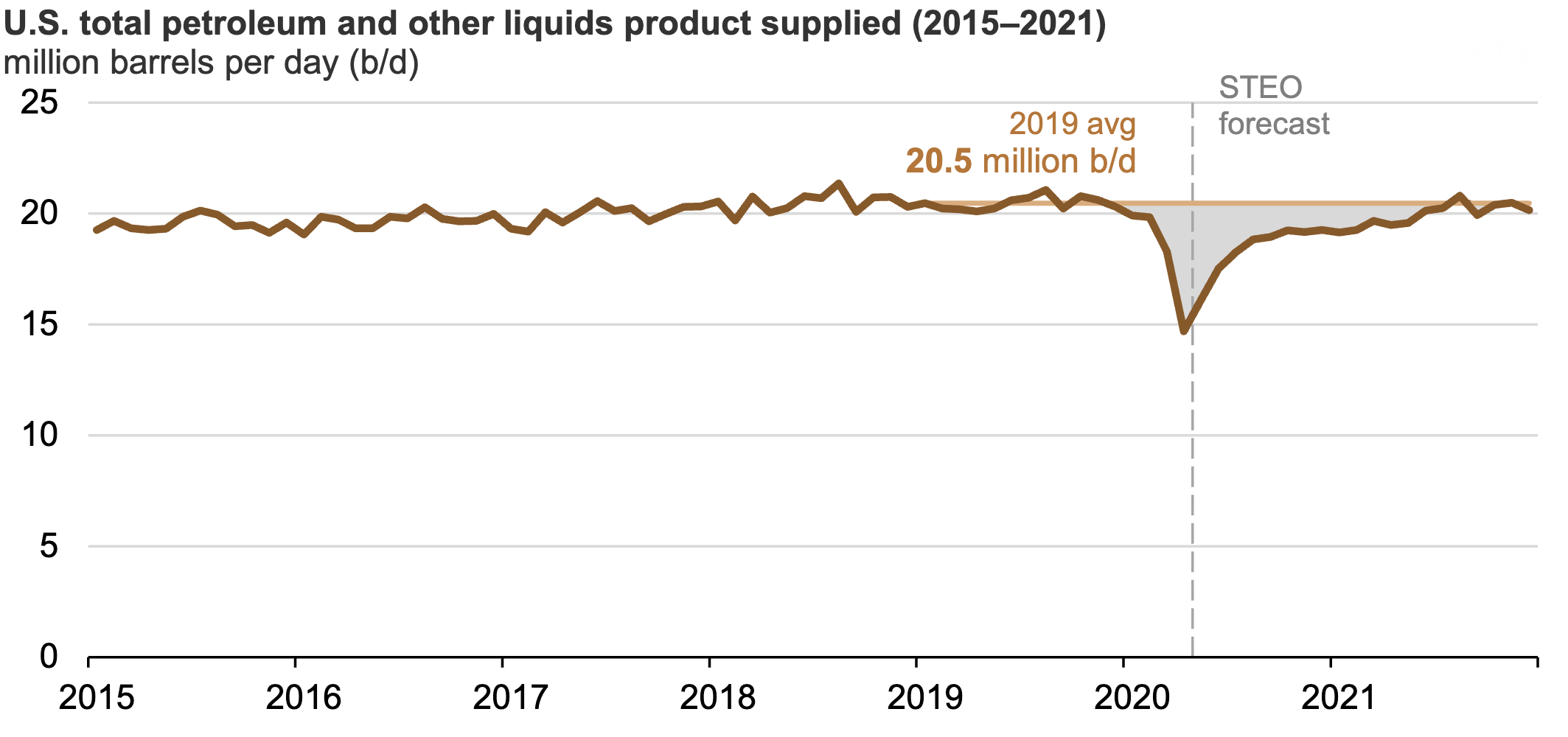EIA Forecasts Year-Long U.S. Petroleum Demand Recovery
(P&GJ) — The U.S. Energy Information Administration’s (EIA) July Short-Term Energy Outlook (STEO) forecasts that U.S. consumption of total petroleum and other liquid fuels will continue increasing in the second half of 2020 as economic activity increases, but levels will remain lower than the 2019 average until August 2021.
In April, consumption of liquid fuels in the United States, as measured by product supplied, reached its all-time monthly low since the early 1980s at an average of 14.7 MMbpd. Weekly data show consumption of petroleum products has increased as states have relaxed restrictions.
Almost half of the decrease in U.S. consumption caused by the Covid-19 pandemic has come from reduced motor gasoline use, EIA said. The agency expects motor gasoline consumption will average 8.3 million b/d in 2020, down 1 MMbpd (10%) from 2019.
The EIA bases its projected increase in gasoline consumption during the second half of this year on a forecast increase in employment. EIA assumes employment levels will continue to grow in 2021, and gasoline consumption will increase to 9.1 MMbpd, or to about 2% less than its 2019 average.
EIA expects U.S. jet fuel consumption in 2020 to be 31% lower than its 2019 average, a much larger percentage change than gasoline (down 10%) and distillate (also down 10%). U.S. jet fuel consumption fell to an estimated 660,000 bpd in the second quarter of 2020, and EIA expects it to rise to 1.4 MMbpd in the fourth quarter of this year. The agency expects jet fuel consumption will continue to rise in 2021 and average 1.5 MMbpd – about 12% lower than its 2019 average.
During peak stay-at-home orders, distillate consumption was relatively less affected by Covid-19 mitigation efforts than gasoline or jet fuel consumption, as it is less affected by travel restrictions. Distillate fuel is also used in activities that are not as directly affected by public health restrictions, such as by diesel engines in heavy construction equipment and as heating oil both for space heating in buildings and industrial heating.
Related News
Related News

- Trump Aims to Revive 1,200-Mile Keystone XL Pipeline Despite Major Challenges
- ONEOK Agrees to Sell Interstate Gas Pipelines to DT Midstream for $1.2 Billion
- Energy Transfer Reaches FID on $2.7 Billion, 2.2 Bcf/d Permian Pipeline
- Boardwalk Approves 110-Mile, 1.16 Bcf/d Mississippi Kosci Junction Pipeline Project
- Kinder Morgan Approves $1.4 Billion Mississippi Crossing Project to Boost Southeast Gas Supply
- Tullow Oil on Track to Deliver $600 Million Free Cash Flow Over Next 2 Years
- GOP Lawmakers Slam New York for Blocking $500 Million Pipeline Project
- Energy Transfer Reaches FID on $2.7 Billion, 2.2 Bcf/d Permian Pipeline
- Enbridge Should Rethink Old, Troubled Line 5 Pipeline, IEEFA Says
- Polish Pipeline Operator Offers Firm Capacity to Transport Gas to Ukraine in 2025





Comments